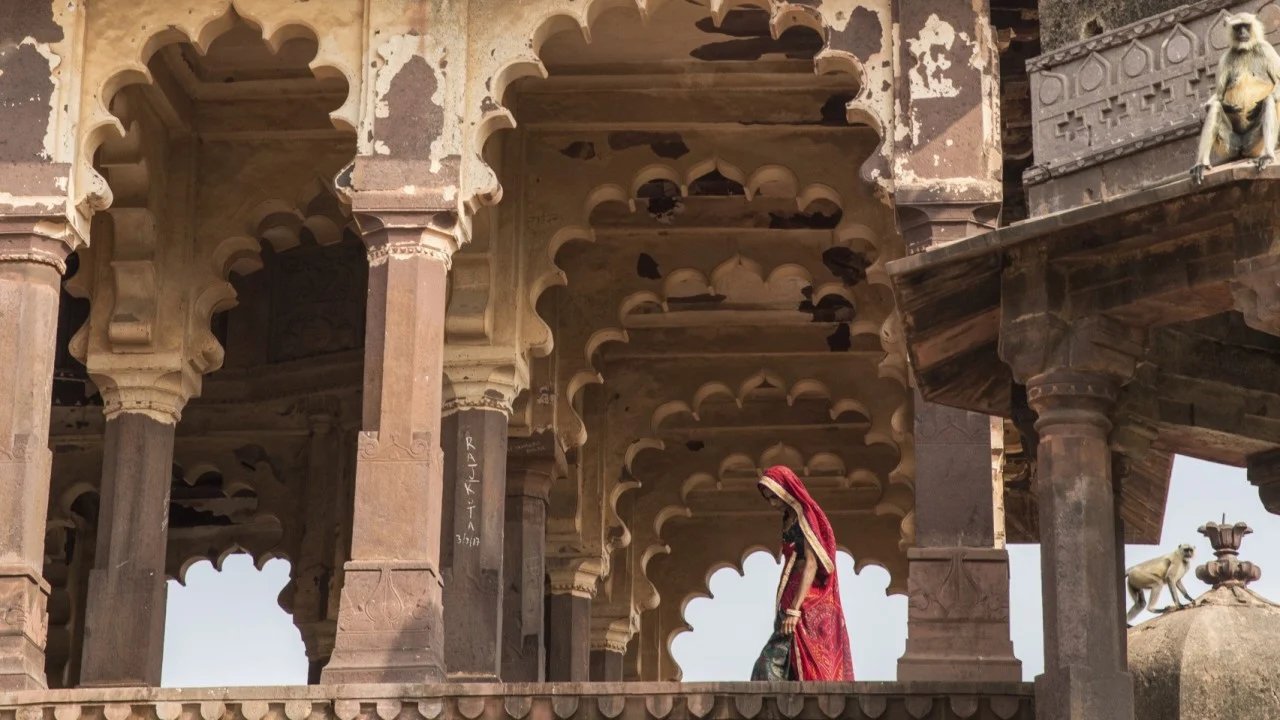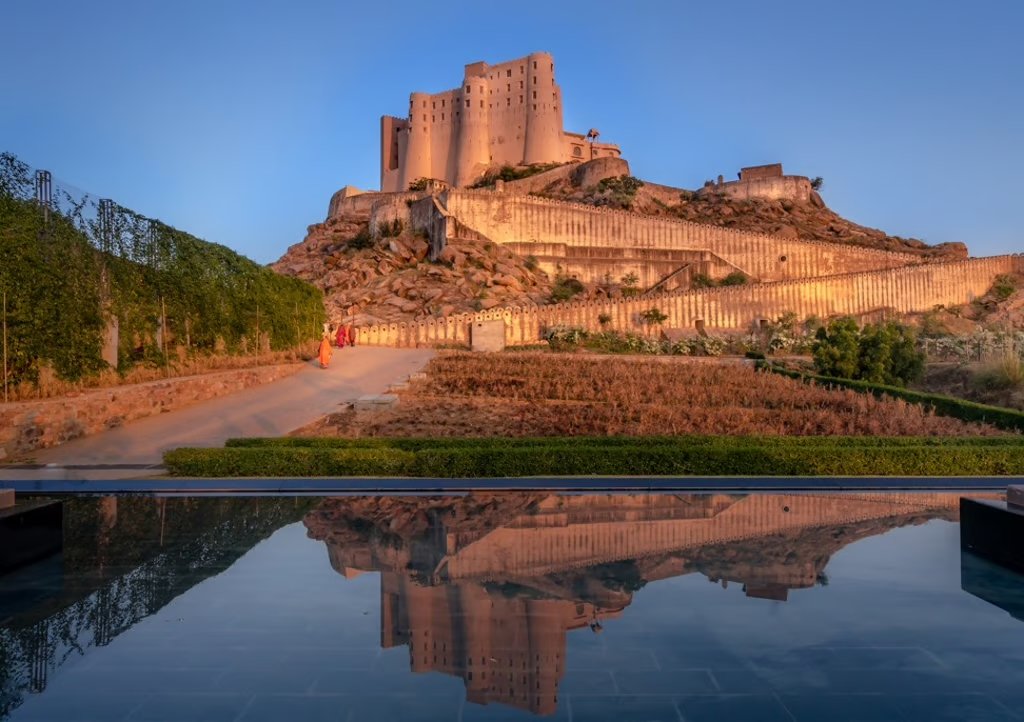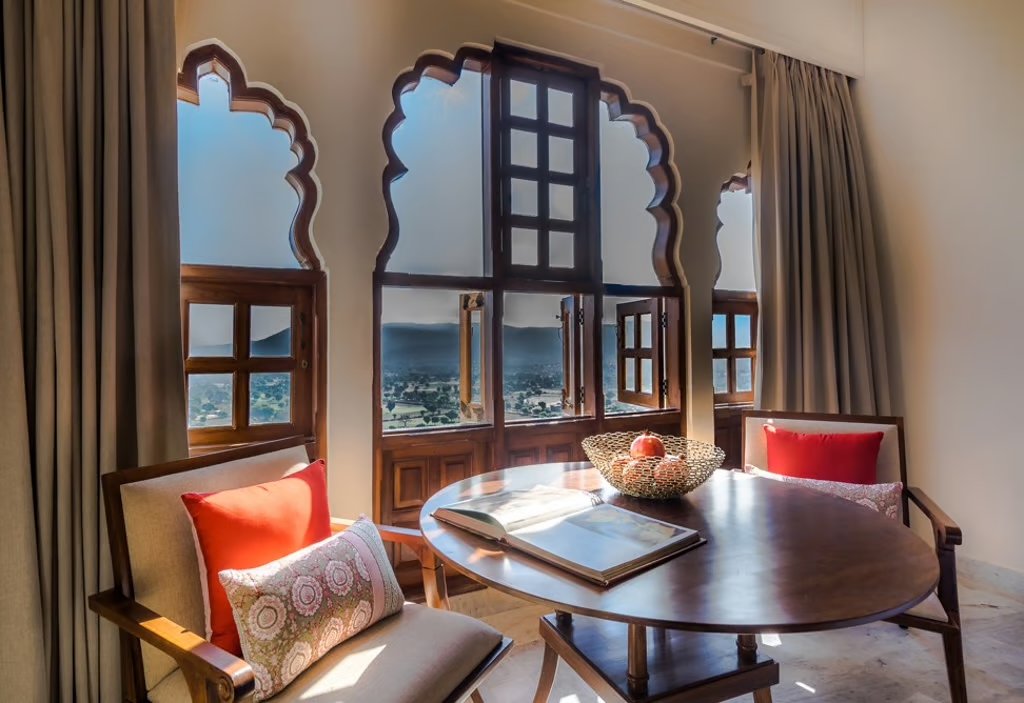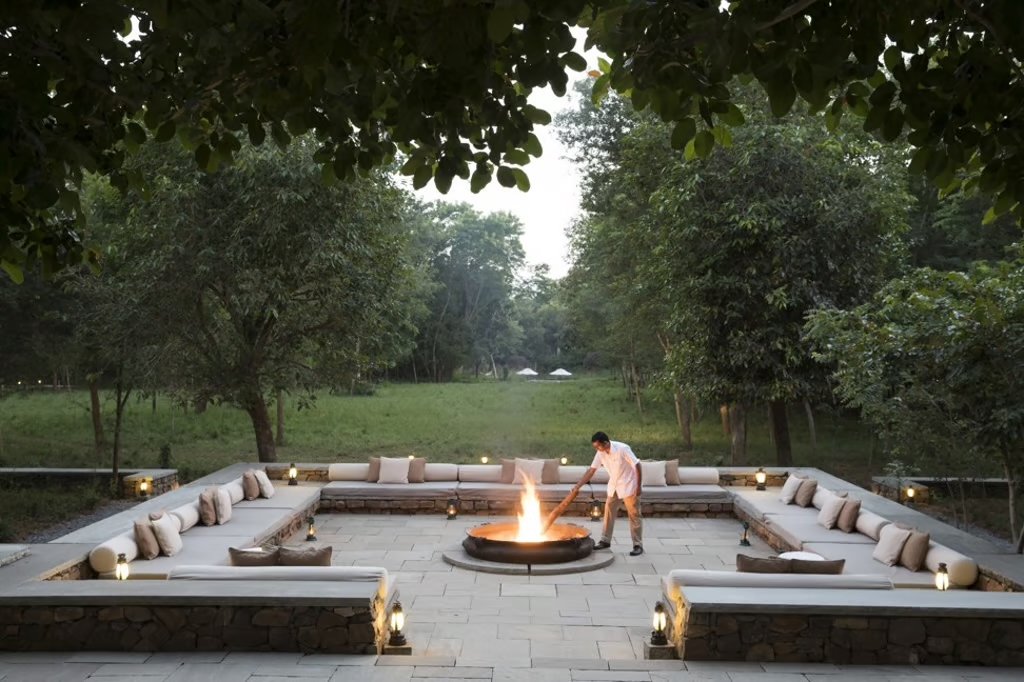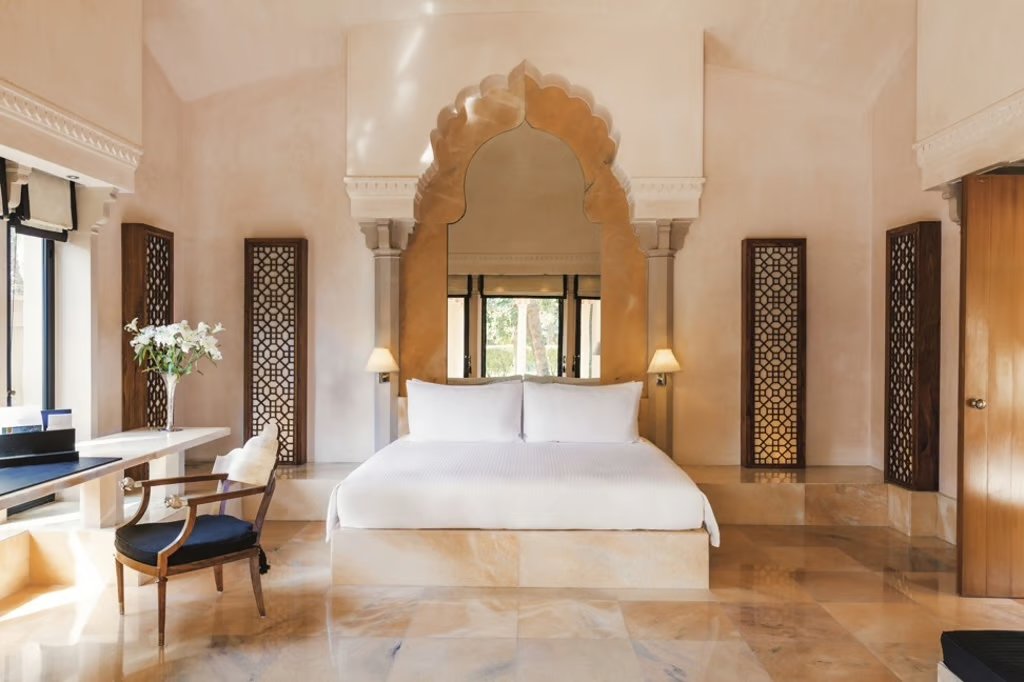How India has reclaimed heritage sites to create incredible luxury travel resort destinations
From Rajasthan to New Delhi, heritage sites, including a 230-year-old fort, converted to luxury hotels are sustainable options to preserve and revive existing buildings
The biggest advantage that India has for travellers is its sheer diversity of locations. Each area offers a little bit of everything to satisfy all age groups and interests, whether it’s the metropolises such as New Delhi and Mumbai, or the sandy beaches of Goa and Gokarna.
When it comes to bespoke experiences, India’s rich history stirs the imagination of discerning travellers. Rajasthan, often dubbed “Land of Kings”, embodies that very notion with its medieval forts and palaces. Its history is long and storied, from the Rajput dynasties and the Mughal and Maratha empires, to the emergence of the British East India Company.
Today, some heritage sites are being reclaimed as a sustainable option to preserve and revive existing buildings. Alila, a luxury hotel brand with properties in Asia, is one of a number of hotel groups with outfits in the Jaipur area.
Sitting atop a granite hillock is the imposing, 230-year-old Fort Bishangarh, refurbished as one of Alila's luxury offering the Manoharpur region close to Jaipur. Photo: Handout
On top of a granite hillock sits the 230-year-old warrior fort, Bishangarh. It has long outlived its original purpose of guarding the kingdom of Jaipur against invaders from the north. Surrounded by havelis (mansions), villages and temples in the Aravalli Range, it is now known as Alila Fort Bishangarh.
The fortress is owned by a Rajput leader and two entrepreneurs who together returned the original structure to its full integrity while reinventing it with 21st-century modernities. However, this did not come without challenges.
Less than a decade ago, the only inhabitants within the abandoned fort were colonies of bats and monkeys. One can only imagine the enormous disrepair and the decades of neglect. To return the building to any semblance of its former glory, the walls and other structures had to be strengthened and stabilised again. Finding circulation through three-meter-thick walls was another testing task, as was deciphering “the unconventional puzzle of the organic structure, which featured not a single 90-degree wall”.
Close attention to detail was key to the resurrection of Fort Bishangarh, now part of Alila's portfolio of luxury hotels in Rajasthan. Photo: Handout
And yet, from the original fortification in the upper and outer wings, Alila managed to carve out 59 suites in the curved and sloping walls of the existing turrets. And since the building had no typical floor plan, there were, all in all, 23 different room configurations; it took 1,800 hours to draw up every minute detail.
The outer plaster work was an exercise in experimental work. Numerous mixes of mortar using local stone dust were attempted to achieve the same “cracked” appearance of the existing plaster on the old walls.
The Heritage Suite, Alila Fort Bishangarh. Photo: Handout
A former abode of several kings, the fort’s 100,000 sq ft area is mostly finished in local sandstone, while only 30,000 sq ft of the space is covered in marble.
“From the very start, simplicity was sought,” according to a statement from the Alila group. “Rather than creating an ornate palace, as might be expected of a Rajasthani heritage property, the design direction is decidedly stark and spartan, marked by clean and uncluttered interiors judiciously woven with Rajasthani elements – Jharokha-style windows, stone jaali work, brass-embossed panels, Tarkashi (the craft of brass wire designs inlaid in wood), hand block-printed fabric, old-style doors and wall frescoes with Thikri mirror work.”
Rajasthan’s essence is not only found behind thick brick walls, but in its wildernesses.
Aman-i-Khás lies on the edge of Ranthambore National Park and comprises 10 luxury guest tents, inspired from former Mughal hunting parties. Photo: Handout
On the edge of Ranthambore National Park (a maharaja hunting ground until 1970) sits Aman-i-Khás, part of the luxury Aman hotel group, whose property is inspired by begone Mughal hunting parties.
It has 10 guest tents and each is assigned with a personal butler. Jeep safaris take guests into the 1,334 sq km surrounding wilderness in an attempt to catch a glimpse of tigers, leopards and other wildlife.
Jeep safaris near Ranthambore National Park may result in tiger and other wildlife sightings. Photo: Handout
National park-approved guides can take you to the remnants of Ranthambore fort, a 25-minute drive away from the Aman grounds. Built in the years between 944 and 1110, with 7km ramparts, the fort was the scene of several intense battles. These days, the battles are over and a largely forgotten old city within the outer perimeter walls of the fortress is what remains. A dozen shops guard the narrow thoroughfare while camels continue to be the preferred way of moving around.
Ranthambore fort is a 25-minute drive away from Aman-i-Khás. Photo: Handout
If tented accommodation isn’t really your vibe, the sister property, Amanbagh, is often a stopping point before arriving at Aman-i-Khás. And a nice feature of this estate – which was once used by the maharaja of Alwar as his base for tiger-hunting expeditions – is that you can travel to its location by helicopter. This modern-day Mughal palace is carved out of local pink marble and sandstone with scalloped arches and cupolas. Here, guests stay in suites and pavilions all with private outdoor space, which are laid out across two storeys.
Amanbagh is the sister resort of Aman-i-Khás. Photo: Handout
Whether you are looking to stay in fortified estates, luxurious tented compounds or majestic jungle palaces, Rajasthan with its rich past will remind you at every turn of the wild beauty of its land.
Original article published on South China Morning Post (Jan 30, 2020)
